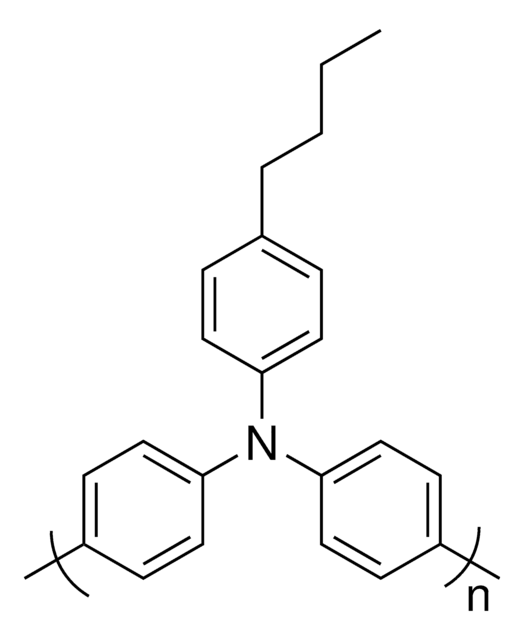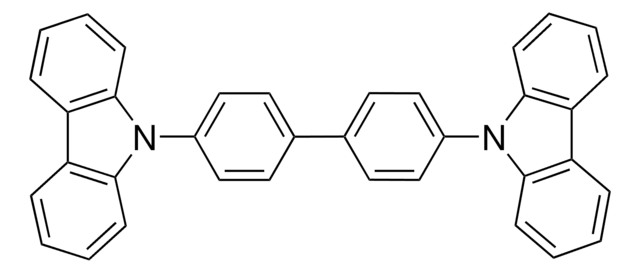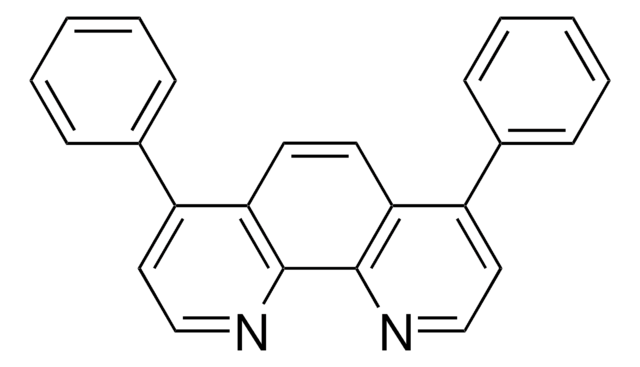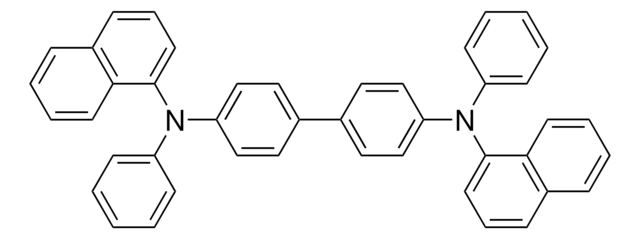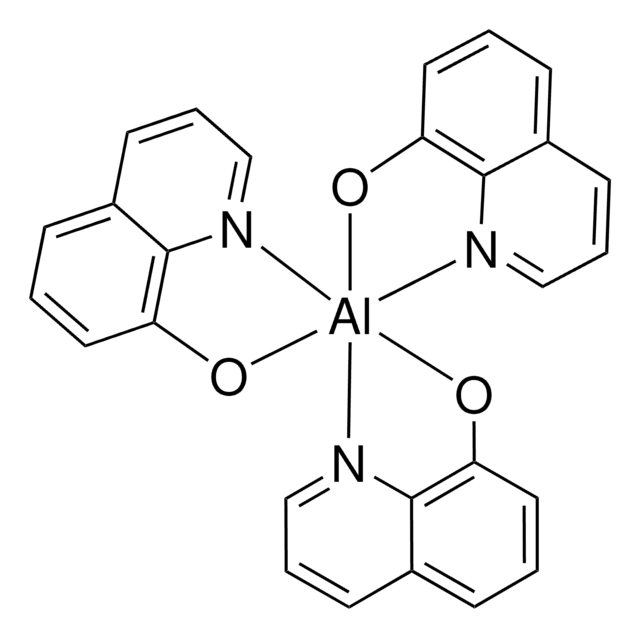About This Item
추천 제품
분석
≥99.5% (HPLC)
Quality Level
양식
powder
mp
272-277 °C
오비탈 에너지
HOMO 6.2 eV
LUMO 2.7 eV
OLED 기기 성능
ITO/MoO3/NPB/Cz-BTPE/TPBi/LiF/Al (ref 2)
ITO/MoO3/NPB/Ph-BTPE/TPBi/LiF/Al
ITO/MoO3/NPB/isopro-BTPE/TPBi/LiF/Al(ref 2)
ITO/MoO3/NPB/methyl-BTPE/TPBi/LiF/Al (ref 2)
SMILES string
C1(C2=NC(C=CC=C3)=C3N2C4=CC=CC=C4)=CC(C5=NC(C=CC=C6)=C6N5C7=CC=CC=C7)=CC(C8=NC(C=CC=C9)=C9N8C%10=CC=CC=C%10)=C1
InChI
1S/C45H30N6/c1-4-16-34(17-5-1)49-40-25-13-10-22-37(40)46-43(49)31-28-32(44-47-38-23-11-14-26-41(38)50(44)35-18-6-2-7-19-35)30-33(29-31)45-48-39-24-12-15-27-42(39)51(45)36-20-8-3-9-21-36/h1-30H
InChI key
GEQBRULPNIVQPP-UHFFFAOYSA-N
유사한 제품을 찾으십니까? 방문 제품 비교 안내
일반 설명
The increase in power conversion efficiency of the device on the addition of TBPi is attributed to the following reasons:
- Preventing exciton from quenching at the acceptor/cathode interface.
- Acting as an optical spacer.
- Forming a passivating layer.
애플리케이션
Storage Class Code
11 - Combustible Solids
WGK
WGK 3
Flash Point (°F)
Not applicable
Flash Point (°C)
Not applicable
이미 열람한 고객
문서
Organic Light-emitting Diodes (OLEDs) are solid-state devices that transform electrical energy into light. OLEDs are considered the next generation technology for high-resolution flexible displays and solid state lighting, attracting intense scientific and industrial interest.
Advances in the area of soft optoelectronics, with a focus on the development of organic optoelectronic devices on shape memory polymers (SMP) is discussed.
관련 콘텐츠
Organic electronics utilizes organic conductors and semiconductors for applications in organic photovoltaics, organic light-emitting diodes, and organic field-effect transistors.
자사의 과학자팀은 생명 과학, 재료 과학, 화학 합성, 크로마토그래피, 분석 및 기타 많은 영역을 포함한 모든 과학 분야에 경험이 있습니다..
고객지원팀으로 연락바랍니다.
